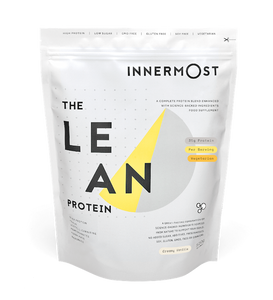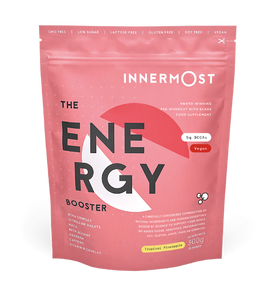We’re always on the look out for way to spice up our workout routines and try something new – so if you’re anything like us, strap in and listen up. If you’re a fan of a classic HIIT workout, this one is for you.
What is Tabata?
Tabata training, also known as Tabata protocol, is a type of high intensity interval training, or HIIT, for short. This means that this type of exercise requires you to train hard and fast, alternating between intense periods of exercise and recovery periods. This is designed for those who are after a quick, effective workout. And it’s really, really popular.
Tabata training, specifically, refers to the time periods in which you partake in these exercises. For only four minutes, Tabata workouts require you to give your all through the eight sets. It’s been described as one of the most effective methods of HIIT by researchers. But where did it come from?
The History of Tabata Protocol
The origins of the Tabata workout are actually based in evidenced research and Japanese heritage. Dr. Izumi Tabata and the National Institute of Fitness and Sports in Tokyo. During 1996, Dr Tabata and his team analysed two groups of athletes from the Japanese skating team, whilst they were exercising. The team compared aerobic and anaerobic exercises under lab conditions, using high intensity interval training. They specifically researched the effectiveness of a 20/10 session – twenty seconds training, ten seconds rest, for four minutes in total.
The two groups were split, with one group engaging in the Tabata workouts, and the control group engaged in one hour of exercise. This continued for six weeks. After this time period, it was clear that the Tabata workouts were far superior, with the Tabata group improving their anaerobic fitness levels significantly.
What are the health benefits of Tabata training?
The benefits of Tabata exercise are huge, including health, training and convenience. One of the best ways to stay motivated to exercise is through switching up your workouts, and Tabata is a great way of doing that, too.
Benefits of Tabata
- Quick and effective
- Improves your endurance levels
- Improves your speed
- Great strength training opportunities
- Burns fat
- Maintains muscle
Tabata workout inspiration
- Sprints
A sprint is a short, high-intensity period of fast running. Sprint for twenty seconds and then rest for ten seconds, and repeat.
- Squats
These are great for building your quads and hamstrings, and toning up your glutes – win, win. Stand straight with your feet shoulder-width apart, and weighted or un-weighted, bend and squat your knees as low as possible in a controlled move. Keep your chest up and your back relaxed.
To add extra intensity, you could try a pulsing squat. When you’re at bottom of your squat, hold it and pulse up and down before returning to your standing position. Repeat for twenty seconds and then rest for ten.
- Push-ups
Ah, the old, dreaded push up. This exercise is great for strengthening your upper body and working your core. Kneel down on a soft but flat surface and place your arms, shoulder width apart, out in front of you on the floor. Assume the plank position and lower your body using your arms until your chest nearly touches the floor – then, push yourself back up. Repeat.
- Sit-ups
Sit-ups… you either love them or you hate them. Whatever your stance, they are a great Tabata workout. Start by lying down on your back on a soft, flat surface. Cross your hands across your chest – and your legs, if you need a bit of extra balance support. Breathe in, lift your chest off the floor to the sitting position, whilst exhaling.
You guessed it… repeat.
- Mountain climbers
Mountain climbers are deceptive. They look pretty simple, but give a killer abdominal burn, and are great for working your core.
Find an empty space in the gym or at home, and place both your hands and knees on the floor. Now, put your right foot near your right hand and keep your left foot out behind you. In a running motion, switch your feet so that you are alternating legs, whilst keeping your hands in the same position. Continue for twenty seconds, rest, and repeat.
- Lunges
The beauty of a lunge is that this effective exercise can be done weighted or unweighted, depending on your desired Tabata workout or fitness goals. If you’d like to use weights, grab some dumbbells at an appropriate weight. Don’t strain yourself here, the goal is repetitions – not weight training!
Stand up straight with your hands down by your sides and step your dominant leg out in front of you as far as you can – probably around 90 degrees. Lift this leg to return to standing, and repeat with the other leg. Twenty seconds lunging, ten seconds rest.
- Burpees
Stand tall, with your feet apart and your arms down by your side. Next, assume the squat position (as described above) and put your hands out on the floor in front of you, in between your feet. You should be looking something like a frog at this point… flattering – we know.
From this point, jump your feet back so that you are in the push up position. Keep your back flat. Next, jump back into your frog-like squat, and then jump into the air to finish. Repeat!
P.S – If you want to challenge yourself, add a push up mid burpee and feel the burn.
Summary
Fitness fads come and go but the Tabata protocol is one that has been tried and tested. If you’re looking for a new workout regime that is backed up by scientific research and packs a punch – Tabata training is a great new alternative for you.
When you engage in high intensity workouts such as this one, or just up your exercise levels, you’d be surprised how much energy you gain and how great you feel in yourself. But, if you’re struggling with your energy levels, The Energy Booster is a vegan supplementation that contains BCAA’s and natural energy boosters such as leucine and caffeine. Be sure to check it out!
References
- Imanudin, I., & Sultoni, K. (2017, March). Tabata Training for Increasing Aerobic Capacity. In IOP Conference Series: Materials Science and Engineering (Vol. 180, No. 1, p. 012205). IOP Publishing. Click here.
- Tabata, I. Tabata training: one of the most energetically effective high-intensity intermittent training methods. Journal of Physiological Science. 69, 559–572 (2019). Click here.



















